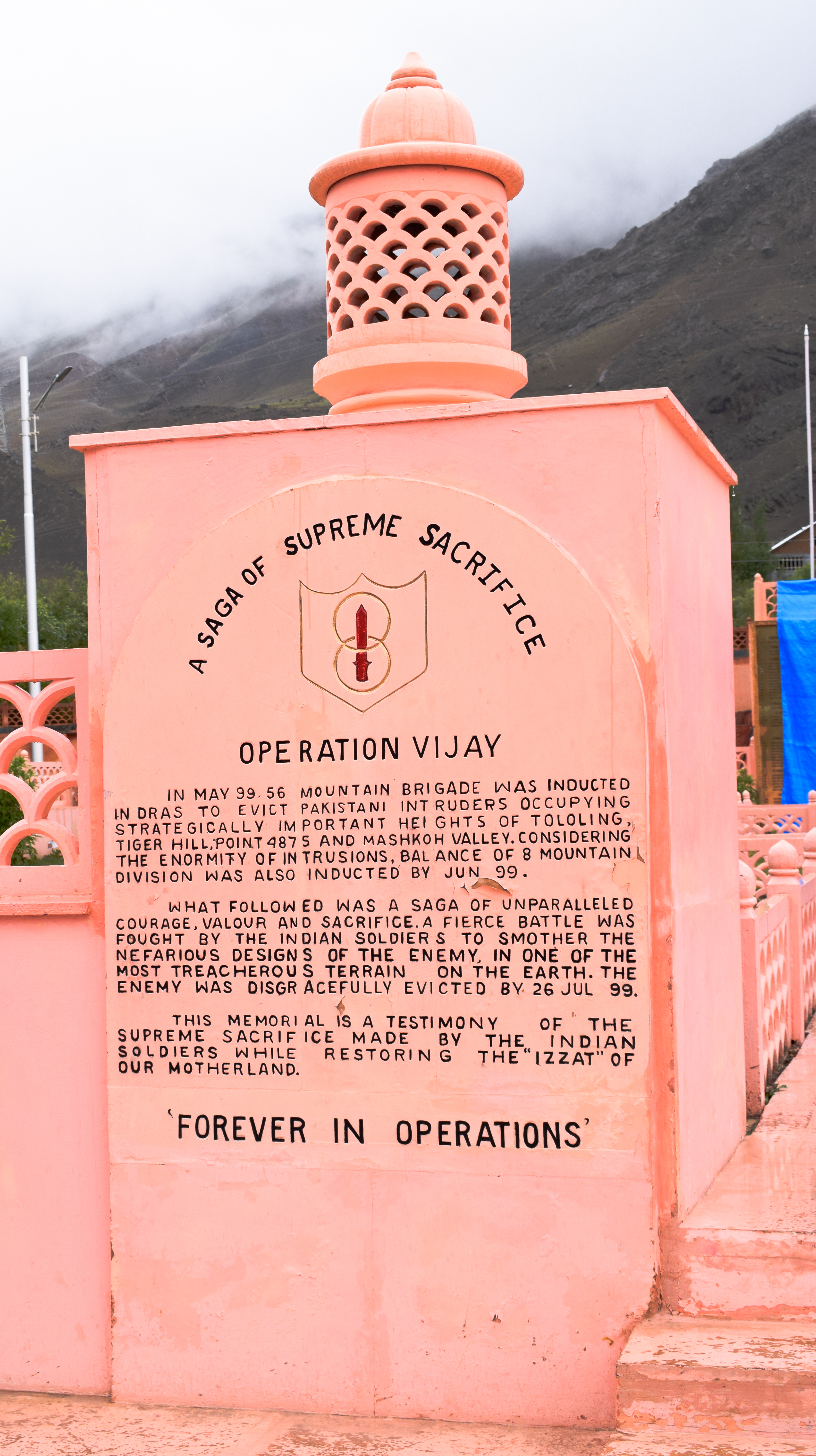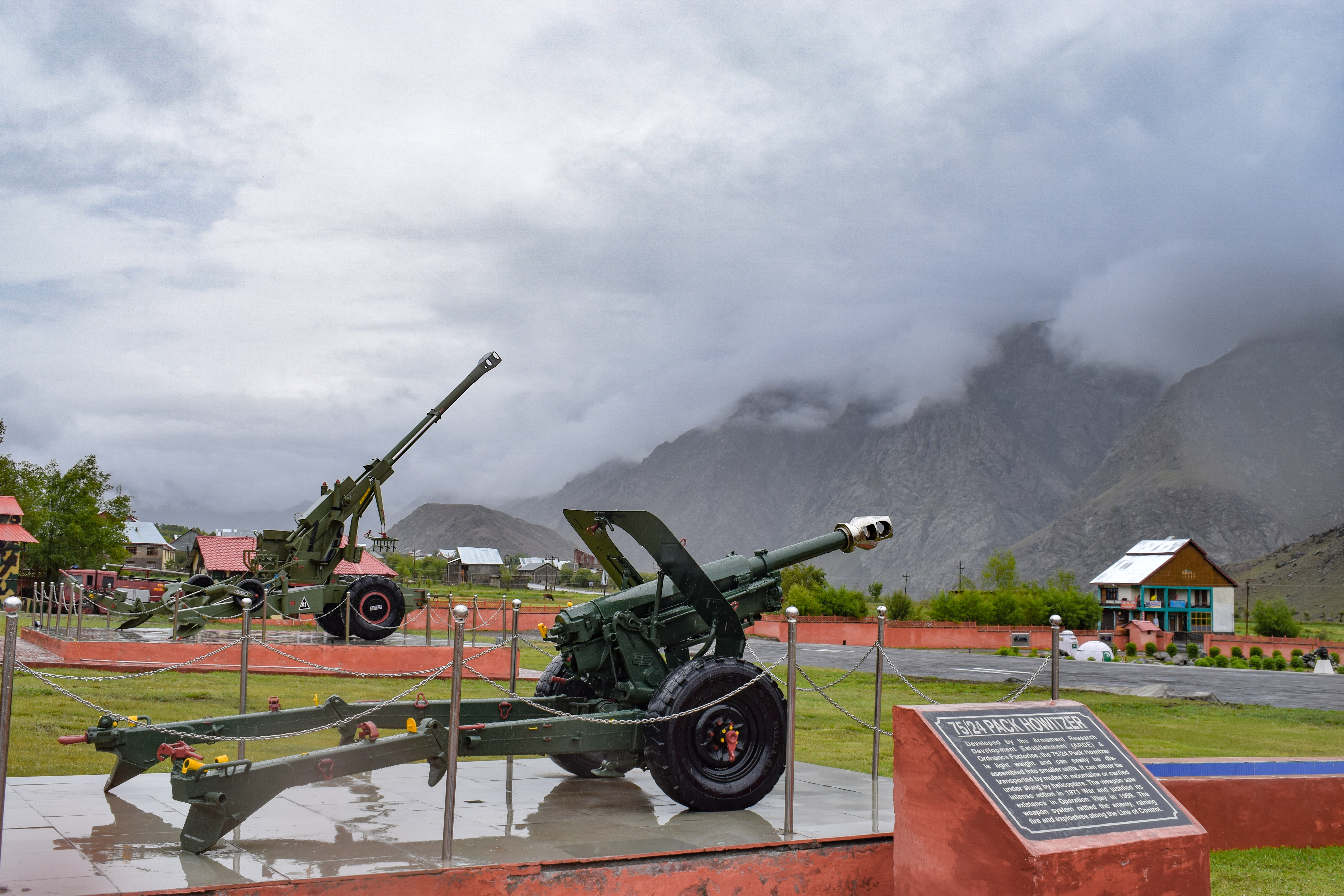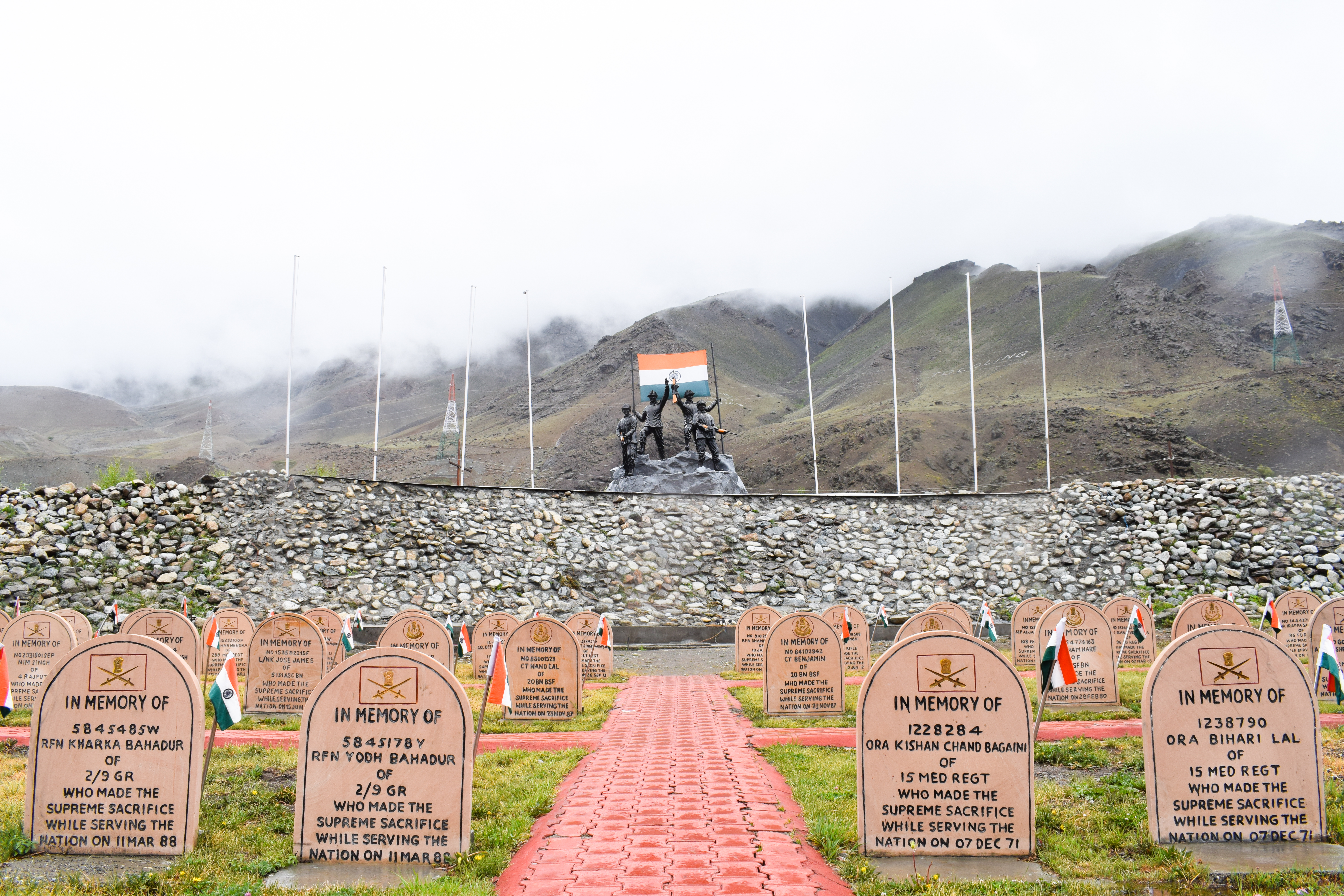This is an old revision of this page, as edited by Reflectionsbyprajakta (talk | contribs) at 10:48, 9 October 2018. The present address (URL) is a permanent link to this revision, which may differ significantly from the current revision.
Revision as of 10:48, 9 October 2018 by Reflectionsbyprajakta (talk | contribs)(diff) ← Previous revision | Latest revision (diff) | Newer revision → (diff)

Kargil War Memorial, is a war memorial built by the Indian Army, located in Dras, in the foothills of the Tololing Hill. The memorial is located about 5 km from the city centre across the Tiger Hill. It is located on the Srinagar-Leh National Highway 1D. The memorial is in the memory of the soldiers and officers of the Indian Army who were martyred during the 1999 conflict between India and Pakistan. The conflict later became known as the Kargil War. The memorial has a huge epitaph with names of all the officers and soldiers who died in war. Kargil Vijay Diwas is celebrated on 26 July every year at the memorial simultaneously the Prime Minister of India pays tribute to the soldiers at Amar Jawan Jyothi at the India Gate, New Delhi. The main attraction of the whole memorial is the Sandstone wall, in the open, which has the names of all the Indian army personnel, who laid their lives during the Kargil war besides there is also a souvenir shop. Visitors to the memorial can also see from there, some of the peaks that the Indian army captured back from Pakistan. A giant national flag, weighing 15 kg was hoisted at the Kargil war memorial to commemorate the 13th anniversary of India’s victory in the war.
History
In the winter months of 1999, Pakistani Army had intruded into Indian Territory across the Line of Control (LoC) and occupied numerous heights dominating the National Highway and roads connecting Leh and Kargil to Srinagar. The Indian Army launched operation Vijay (Victory) in May 1999. Fierce battles were fought to regain territory. Each year, 26 July is observed as 'Kargil Vijay Diwas' (Kargil Victory Day) to commemorate this conflict.
A make-shift Memorial is said to have been constructed to honour the Indian soldiers who laid down their lives during the Kargil Conflict sometime in 2000. The memorial, in its current form was constructed by the Indian Army in Nov 2014, with the Tololing Heights, Tiger Hill and Point 4875 (Batra Top) forming the background. Some of the toughest battles in Military History were fought to regain these heights in 1999. The memorial is made of pink "Chitter Stone" with a brass plate in the background that is engraved with names of all soldiers who laid down their lives during Operation Vijay.
Over the years, numerous infrastructural improvements have been made in the memorial. On 26 July 2012, the Flag Foundation of India presented a National Flag sized 37.5 feet by 25 feet on a 100 feet high flag pole to the Memorial. This majestic flag stirs up the National Pride of every visitor. The Kargil War Memorial is an important landmark and a major tourist attraction in Western Ladakh. In the year 2016, approximately 1,25,000 visitors are believed to have visited the Memorial.
References
- ^ "Dras War Memorial - Vijaypath". jktourism.org.
- "Drass memorial: Invoking memories of Kargil war". Rediff. 27 July 2011.
- "Kargil War Memorial". jktourism.org.
External links
 Media related to Kargil War Memorial at Wikimedia Commons
Media related to Kargil War Memorial at Wikimedia Commons







